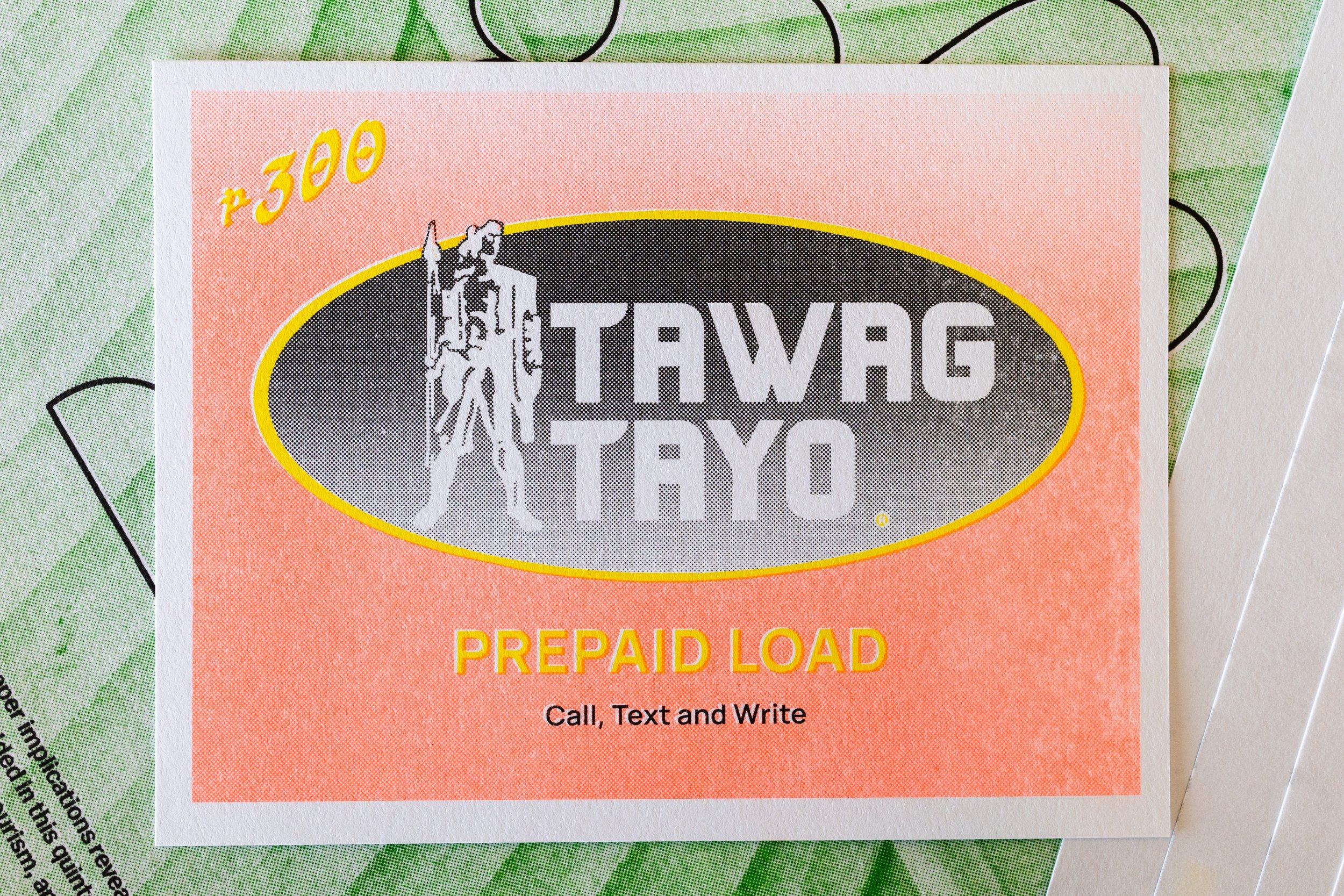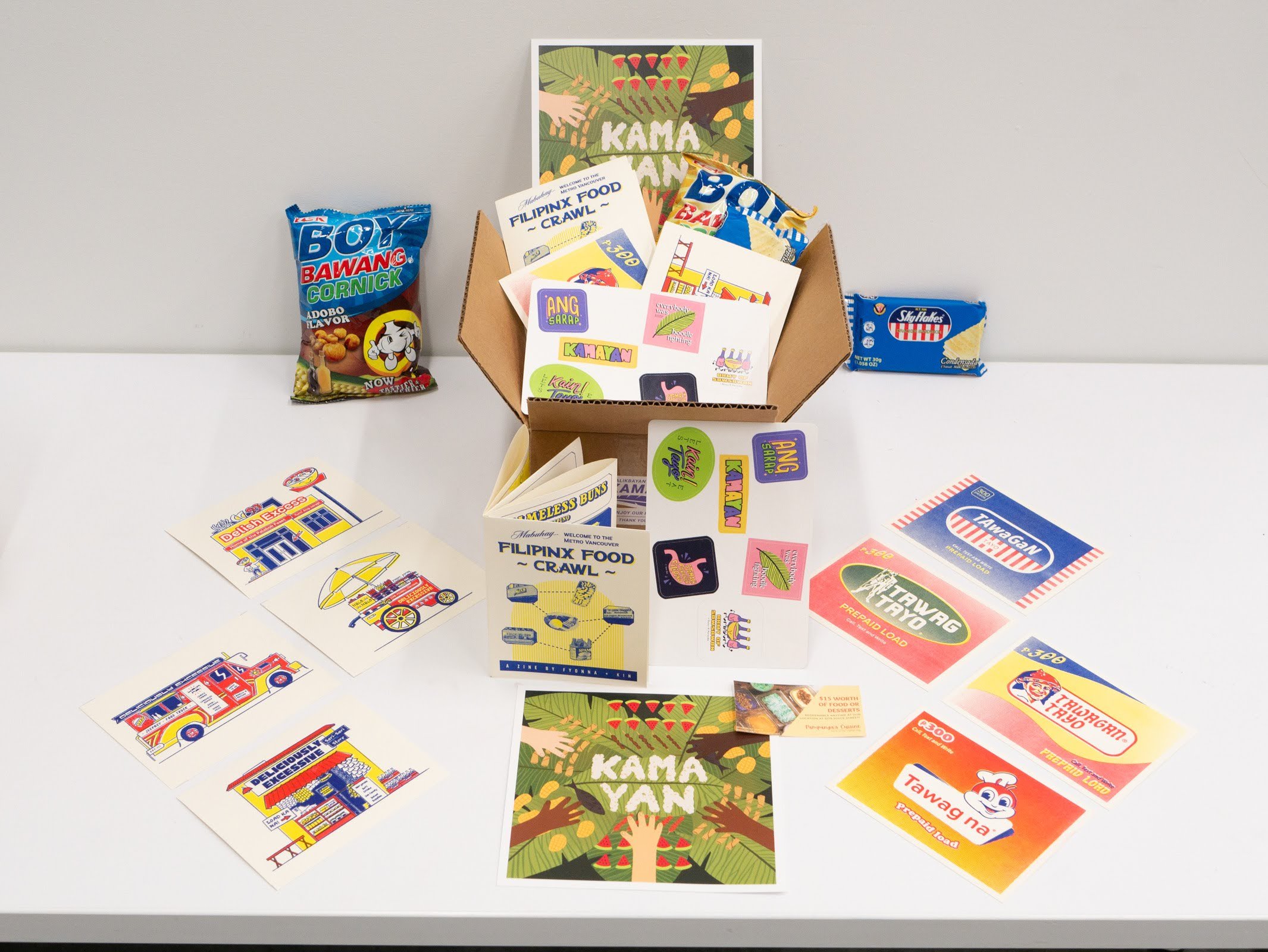
installation, visual identity, publicationBahay Natin:
A Celebration of Filipinx Stories, Culture, Creativity, & Community
CO-DESIGNER
Kin Chua
Bahay Natin (Our House) was created in collaboration with Kin Chua. The project centres around our desire to explore our bi-cultural identity and what that means for us living in the context of Vancouver. Drawing a connection between food and Filipinx resilience throughout time, we explored cuisine in the context of colonial occupation, more recent stories of immigration and food, and the ongoing rezoning plans affecting Filipinx restaurants in Vancouver's Joyce-Collingwood neighbourhood. Through ongoing research and interviews with local Filipinx creatives, we formed a greater understanding of how colonialism and migration impacted and transformed Filipinx cuisine. To further deconstruct this understanding, we hosted a dinner event called a Kamayan or Boodle Fight, where we shared Filipinx food, cultural eating practices, and the impacts of immigration with our peers.
Based on these explorations, we designed a two-part interactive exhibit. The first part was a dining table installation with educational takeaways to continue sharing Filipinx food culture with a broader audience. The second part was a publication that celebrates the perspectives we gained from our community interactions. Bahay Natin was featured in The Show at Emily Carr University in May of 2022.
A Gathering of Gifts
Inspired by our Kamayan event, the concept for our interactive print installation came from the idea of a dining table filled with gifts. In the center of our display, we used a box to hold all of our takeaways and to represent a popular artefact people use in the Filipinx diaspora to send gifts back home to their families. In Tagalog, it’s called a Balikbayan box, which translates in English to “balik” meaning return and “bayan” meaning country.
Our intention was to create an experience and space where audiences could situate themselves within a broader complex cultural setting, opening up conversations about the intersections of food, language, immigration, and identity. Our educational takeaways manifested in riso-printed postcards, placemats, food crawl zines, a menu inspired by various conversations, and a printed publication.












Publication
The Bahay Natin publication aims to show our appreciation for all of the relationships and insights we gained throughout our year developing the project. It includes transcribed interviews from our research phase and portrait photography of each of our interviewees. Each interview section acts as a metaphorical room in Bahay Natin in which the featured interviewees express their ideas and their work. After the interviews, we have a feature of our Filipinx peers in Emily Carr and additional content that details other aspects of our project.
You can view the full publication here.




Exhibition - ECU Grad Show


Kamayan Dinner





